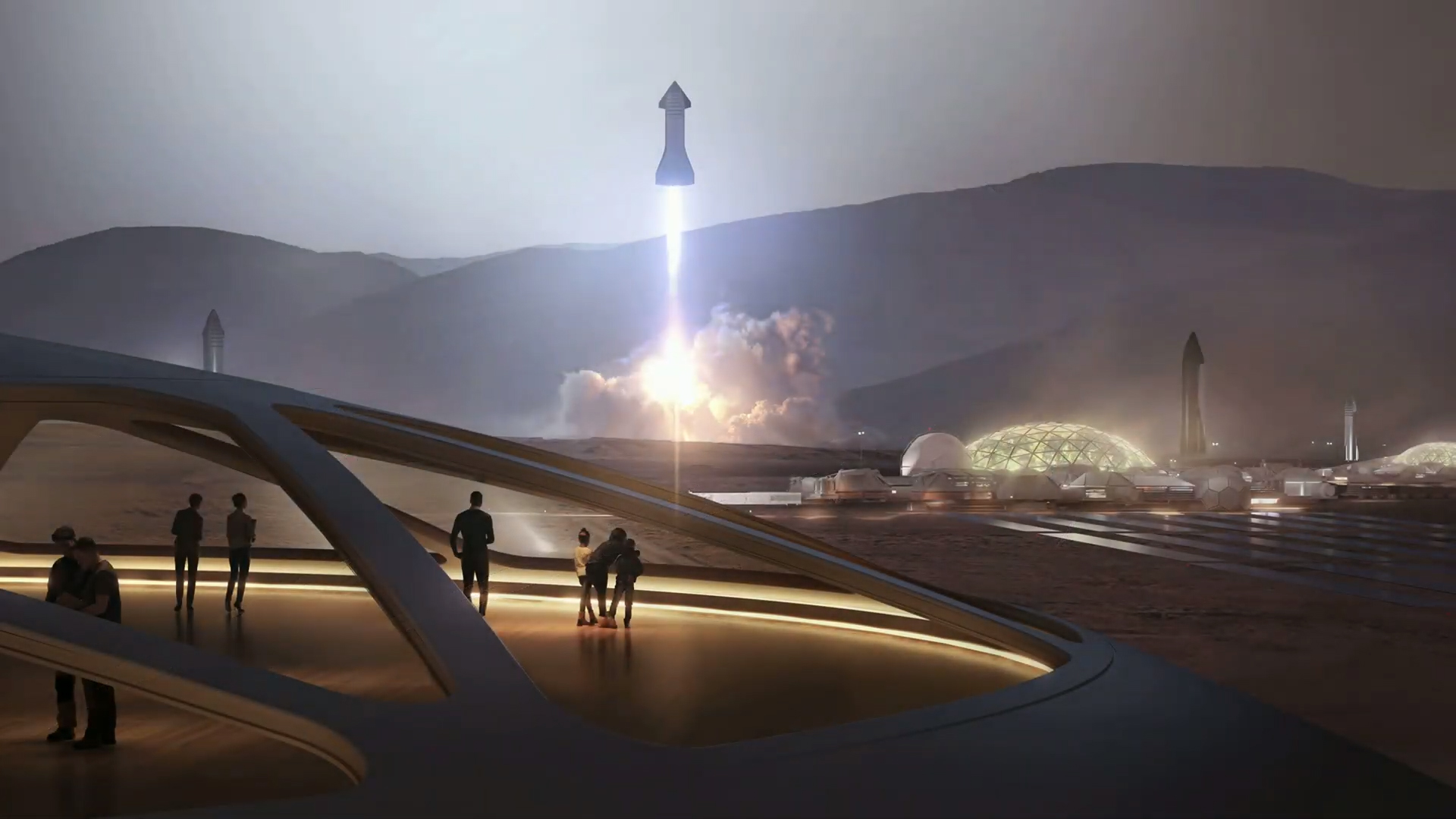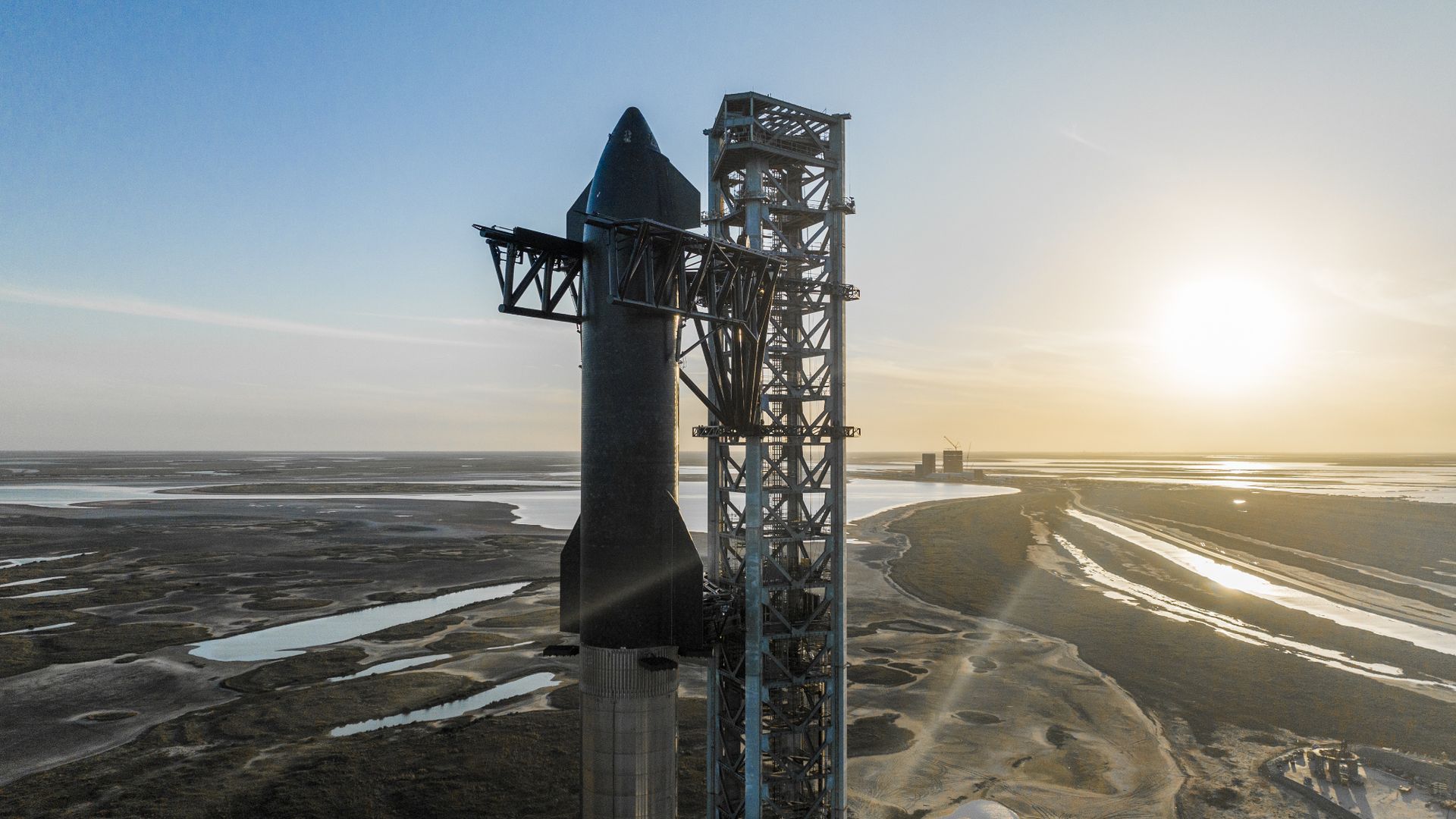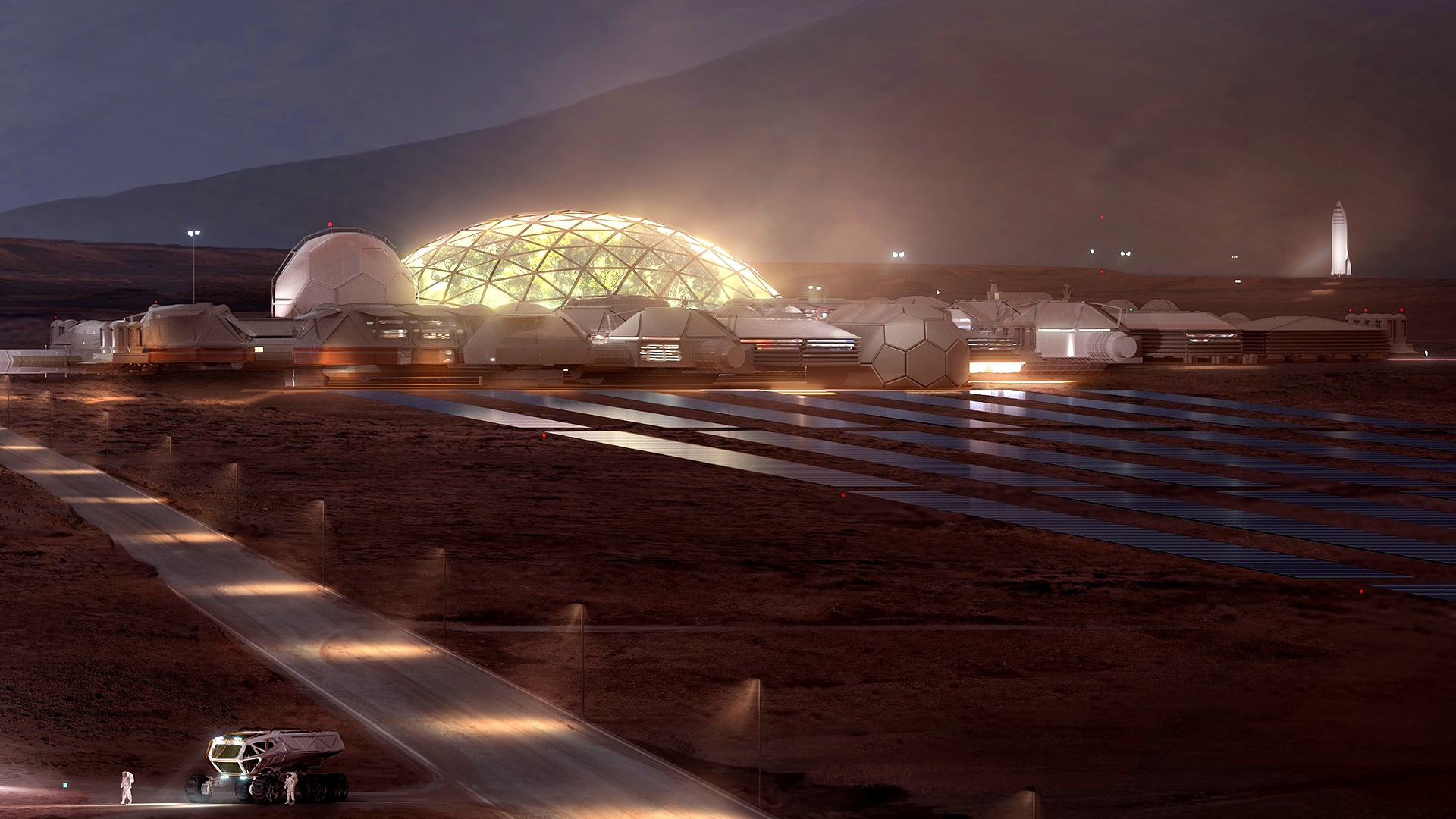
Introduction
In this auspicious occasion, we are delighted to delve into the intriguing topic related to SpaceX: The Company That Will Take Us to Mars. Let’s weave interesting information and offer fresh perspectives to the readers.
Table of Content
- 1 Introduction
- 2 The audacious goal: Colonizing Mars
- 3 Elon Musk’s Vision: A Bold Gamble
- 3.1 The Reusable Rocket Revolution
- 3.2 Starship: The Mars Vehicle
- 3.2.1 Designing for Mars
- 3.2.2 Overcoming Engineering Challenges
- 3.2.3 The Importance of Reusability
- 3.3 The Human Factor: Preparing for Mars
- 3.3.4 Psychological and Physical Challenges
- 3.3.5 Life Support Systems: Sustaining Life on Mars
- 3.3.6 Radiation Shielding: Protecting Astronauts
- 3.4 The Economic and Political Landscape
- 3.4.7 The Cost of Colonization
- 3.4.8 International Collaboration
- 3.4.9 Ethical Considerations
- 3.5 Challenges and Potential Setbacks
- 3.5.10 Technological Hurdles
- 3.5.11 Funding and Resources
- 3.5.12 Political and Regulatory Uncertainties
- 3.6 The Future of SpaceX and Mars Colonization
- 3.6.13 The Timeline for Mars Missions
- 3.6.14 The Long-Term Vision: A Self-Sustaining Colony
- 3.6.15 The Impact on Humanity
- 4 Conclusion
- 5 FAQs
- 6 Closure
SpaceX: The Company That Will Take Us to Mars
The audacious goal: Colonizing Mars
Ever since I was a kid, staring up at the night sky, the idea of humans setting foot on Mars has captivated me. It’s a dream shared by countless others, a testament to our inherent curiosity and our relentless drive to explore the unknown. But for decades, this dream felt impossibly distant, relegated to the realm of science fiction. Then came SpaceX, a company that dared to challenge the status quo, a company that transformed this fantastical dream into a tangible, achievable goal. Their ambition isn’t just about planting a flag; it’s about establishing a self-sustaining human colony on Mars, a feat that would redefine humanity’s place in the cosmos. Imagine a future where humans are a multi-planetary species, where the red dust of Mars becomes as familiar as the green grass of Earth. That’s the future SpaceX is building, one rocket launch at a time. This isn’t just about technological advancement; it’s about expanding the boundaries of what’s humanly possible, pushing the limits of our ingenuity and courage. It’s a story of innovation, perseverance, and the unwavering belief in a future beyond our wildest dreams. And it’s a story we’re all a part of, whether we realize it or not.
Elon Musk’s Vision: A Bold Gamble
SpaceX’s audacious pursuit of Mars colonization is inextricably linked to the vision of its founder, Elon Musk. Musk, a visionary entrepreneur known for his ambitious projects, didn’t simply want to build rockets; he wanted to revolutionize space travel. He saw the limitations of existing space programs, their high costs and slow progress, and envisioned a future where space exploration was more accessible, more efficient, and ultimately, more sustainable. His vision wasn’t just about scientific discovery; it was about ensuring the long-term survival of humanity. He argues that becoming a multi-planetary species is crucial for our survival, mitigating the risks posed by potential Earth-bound catastrophes, from asteroid impacts to climate change. This isn’t just a business venture for Musk; it’s a deeply personal mission, a belief in the necessity of safeguarding humanity’s future. He’s taken calculated risks, pushing the boundaries of engineering and technology, sometimes facing setbacks and criticism, but always driven by an unwavering commitment to his ultimate goal. His leadership style, while unconventional, has fostered a culture of innovation and risk-taking within SpaceX, resulting in remarkable achievements.
The Reusable Rocket Revolution
One of SpaceX’s most significant contributions to space exploration is the development and implementation of reusable rockets. Historically, rockets were essentially one-time use vehicles, discarded after launch, making space travel incredibly expensive. SpaceX’s Falcon 9 rocket, capable of landing vertically after launch, drastically reduced the cost of space travel. This innovation wasn’t just a technological marvel; it was a game-changer. Think of it like this: before SpaceX, every trip to space was like buying a brand-new car and then immediately junking it. Now, SpaceX is essentially renting a car, significantly lowering the overall cost of the journey. This cost reduction is crucial for making the ambitious goal of Mars colonization even remotely feasible. The reusability of the Falcon 9 has not only decreased launch costs but has also increased the frequency of launches, accelerating the pace of SpaceX’s progress towards Mars. It’s a testament to SpaceX’s innovative engineering and their commitment to finding more efficient and cost-effective solutions.
Starship: The Mars Vehicle
Designing for Mars
SpaceX’s Starship is arguably their most ambitious project yet. This fully reusable spacecraft is designed to transport humans and cargo to Mars, and eventually, to other destinations within our solar system. It’s a colossal undertaking, a massive stainless-steel rocket designed for both Earth orbit and interplanetary travel. The scale of the project is breathtaking, a testament to SpaceX’s relentless pursuit of pushing technological boundaries. The design incorporates features specifically tailored for the Martian environment, including the ability to refuel on Mars, a crucial aspect for making longer missions sustainable. This eliminates the need to carry all the fuel from Earth, significantly reducing the launch mass and cost. Think of it as a space-faring version of a car that can refuel at a gas station on another planet – a truly revolutionary concept.
Overcoming Engineering Challenges
Developing Starship has presented numerous engineering challenges. The sheer size and complexity of the rocket, the need for reusability, and the demands of interplanetary travel have pushed the limits of current technology. SpaceX has faced setbacks, including explosions during testing, but these have served as valuable learning experiences. The company’s iterative approach, constantly refining designs and incorporating lessons learned, is a key element of their success. The development of Starship isn’t just about building a rocket; it’s about pushing the frontiers of materials science, propulsion systems, and autonomous flight control. Every successful test flight brings them closer to achieving their ambitious goal. It’s a testament to their resilience and unwavering dedication to overcoming seemingly insurmountable obstacles.
The Importance of Reusability
The reusability of Starship is paramount to its success. Imagine trying to build a house using only disposable tools – it would be incredibly expensive and inefficient. Similarly, the reusability of Starship drastically reduces the cost and complexity of Mars missions. By landing and refuelling on Mars, Starship can significantly reduce the amount of propellant needed for the return journey, making the entire mission more economically viable. It also allows for more frequent missions, accelerating the process of establishing a permanent human presence on Mars. This reusability isn’t just a cost-saving measure; it’s a fundamental element of SpaceX’s long-term vision for space exploration. It’s a crucial step towards making space travel more accessible and sustainable, paving the way for a future where humans routinely travel beyond Earth.
The Human Factor: Preparing for Mars
Psychological and Physical Challenges

A Mars mission presents significant psychological and physical challenges for astronauts. The long duration of the journey, the isolation, and the harsh Martian environment will require extensive preparation and training. SpaceX is actively involved in researching and developing countermeasures to mitigate these challenges, working with experts in fields such as psychology, medicine, and human factors engineering. They are focusing on crew selection, training regimes, and life support systems designed to minimize risks and maximize crew well-being. The psychological resilience of astronauts will be tested, and SpaceX is working to ensure that they are adequately prepared for the mental demands of such a long and arduous journey. It’s not just about the technology; it’s about the human element, ensuring the safety and well-being of the brave individuals who will embark on this historic mission.
Life Support Systems: Sustaining Life on Mars
Sustaining human life on Mars requires sophisticated life support systems. SpaceX is developing technologies to provide astronauts with oxygen, water, and food, while also managing waste and protecting them from harmful radiation. These systems will need to be highly efficient and reliable, able to function autonomously for extended periods. This is a complex engineering challenge, requiring innovations in areas such as closed-loop life support systems, resource utilization, and radiation shielding. Imagine creating a miniature, self-sustaining ecosystem on another planet – that’s the scale of the challenge SpaceX is tackling. They’re not just building rockets; they’re building the infrastructure for a new human civilization. This is a crucial aspect of making Mars colonization a reality, ensuring that astronauts have the resources they need to survive and thrive on the red planet.
Radiation Shielding: Protecting Astronauts
Exposure to cosmic radiation is a significant risk during long-duration space travel. SpaceX is actively researching and developing effective radiation shielding technologies to protect astronauts during their journey to Mars and while living on the planet. This is a critical aspect of ensuring the health and safety of the crew. The Martian atmosphere provides minimal protection against radiation, making effective shielding essential for long-term habitation. The development of such shielding requires advanced materials science and innovative engineering solutions. Think of it as creating a protective bubble around the astronauts, shielding them from the harmful effects of radiation. This is a vital component of making Mars colonization a safe and sustainable endeavor, ensuring the health and well-being of future Martian colonists.
The Economic and Political Landscape
The Cost of Colonization
Colonizing Mars will be an incredibly expensive undertaking. The costs associated with developing Starship, building infrastructure on Mars, and supporting a self-sustaining colony will be astronomical. However, SpaceX’s reusable rocket technology and innovative approaches are designed to mitigate these costs. The economic viability of Mars colonization is a complex issue, requiring careful consideration of both the upfront investment and the potential long-term returns. It’s a long-term investment, a bet on the future of humanity. The potential rewards, however, could be immense, including the discovery of new resources, the expansion of human knowledge, and the creation of new economic opportunities. It’s a high-stakes gamble, but one with the potential to reshape the future of humanity.
International Collaboration
Space exploration is often viewed as a national endeavor, but Mars colonization will likely require significant international collaboration. Sharing resources, expertise, and technology will be crucial to making the project a success. International partnerships can reduce costs, share the risks, and create a more unified approach to exploring and settling Mars. Imagine a future where nations work together, pooling their resources and expertise to achieve a common goal beyond national borders. This collaboration is essential not only for the success of the mission but also for fostering global cooperation and understanding. It’s a testament to the potential of space exploration to unite humanity in a common cause.
Ethical Considerations
The prospect of colonizing Mars raises several ethical considerations. The potential impact on the Martian environment, the rights of future generations of Martian colonists, and the equitable distribution of resources are all important issues that need to be addressed. SpaceX is aware of these ethical concerns and is actively engaged in discussions about responsible space exploration. It’s crucial to ensure that Mars colonization is conducted in a way that respects the planet’s environment and safeguards the rights and well-being of all future inhabitants. This requires a careful and thoughtful approach, ensuring that the pursuit of human progress doesn’t come at the expense of ethical considerations. It’s about ensuring a sustainable and equitable future for all, both on Earth and on Mars.

Challenges and Potential Setbacks
Technological Hurdles
Despite SpaceX’s remarkable progress, significant technological hurdles remain. Developing reliable life support systems, effective radiation shielding, and efficient methods for producing resources on Mars are all ongoing challenges. SpaceX’s iterative approach involves continuous testing, refinement, and innovation, but unexpected problems may still arise. The journey to Mars is fraught with unknowns, and the ability to adapt and overcome unexpected challenges will be crucial for success. It’s a constant process of learning, adapting, and improving. This is a testament to the inherent complexities of space exploration and the need for ongoing research and development.
Funding and Resources
Securing sufficient funding and resources for a Mars colonization project is a major challenge. The financial investment required is substantial, and securing long-term funding commitments is essential. SpaceX has demonstrated its ability to attract private investment, but maintaining this funding stream over the long term will be critical. Diversifying funding sources and exploring public-private partnerships will be crucial for the success of the project. The endeavor requires a substantial and sustained commitment of resources, both financial and human. It’s a long-term investment in humanity’s future, requiring a commitment from various stakeholders.
Political and Regulatory Uncertainties
The political and regulatory landscape surrounding space exploration is complex and ever-changing. International treaties, national regulations, and the evolving legal framework for space activities can pose challenges. Navigating this complex environment and ensuring compliance with relevant regulations will be crucial for SpaceX. The legal and political aspects of space exploration are constantly evolving, requiring careful consideration and adaptation. It’s a complex interplay of national interests, international agreements, and evolving legal frameworks. Successfully navigating this requires a deep understanding of the political and regulatory landscape.
The Future of SpaceX and Mars Colonization
The Timeline for Mars Missions
SpaceX has expressed its ambition to land humans on Mars within the next decade or two, although the exact timeline remains uncertain. The development of Starship, the establishment of infrastructure on Mars, and the resolution of various technological and logistical challenges will all influence the final timeline. The journey to Mars is a marathon, not a sprint, and the timeline is subject to change based on progress and unforeseen circumstances. It’s a long-term endeavor, requiring patience, perseverance, and a commitment to continuous improvement.
The Long-Term Vision: A Self-Sustaining Colony
SpaceX’s ultimate goal is not just to land humans on Mars, but to establish a self-sustaining colony. This requires developing technologies for resource utilization, food production, and habitat construction on Mars. It’s a long-term project, requiring continuous innovation and adaptation. Imagine a future where humans are not just visitors to Mars, but permanent residents, building homes, raising families, and contributing to a thriving Martian civilization. This is the ambitious vision that drives SpaceX, a future where humanity becomes a multi-planetary species. It’s a testament to our innate curiosity and our relentless pursuit of progress.
The Impact on Humanity
The successful colonization of Mars would have a profound impact on humanity. It would represent a giant leap forward in our technological capabilities, our understanding of the universe, and our ability to overcome seemingly insurmountable challenges. It would inspire future generations, fostering innovation and exploration. It could also lead to the discovery of new resources, new scientific knowledge, and new opportunities for human advancement. It’s a pivotal moment in human history, a turning point that could redefine our place in the cosmos. It’s a testament to the human spirit, our ability to dream big, and our unwavering determination to explore the unknown.
Conclusion
SpaceX’s pursuit of Mars colonization is a bold and ambitious undertaking, one that pushes the boundaries of human ingenuity and challenges our understanding of what’s possible. While significant challenges remain, SpaceX’s innovative approach, unwavering determination, and relentless pursuit of technological advancement offer a beacon of hope for a future where humans are a multi-planetary species. The journey to Mars is a long and complex one, but the potential rewards – for humanity’s future, our scientific understanding, and our collective spirit – are immeasurable. It’s a journey that will require collaboration, innovation, and a willingness to embrace the unknown, a testament to the boundless potential of human endeavor.
The story of SpaceX is not just about rockets and Mars; it’s a story about human ambition, resilience, and our unwavering quest to explore the cosmos. It’s a story that is still being written, a story that will continue to inspire and challenge us for generations to come. It’s a story that reminds us that even the most audacious dreams can be realized with enough courage, innovation, and perseverance. The future of space exploration is bright, and SpaceX is leading the charge.
FAQs
- How much will a trip to Mars cost? The exact cost is still uncertain, but estimates range in the hundreds of billions of dollars, spread across development, mission costs, and long-term colony establishment.
- What are the biggest risks of a Mars mission? Major risks include radiation exposure, the challenges of landing and operating on Mars, potential equipment failures, and the psychological impact of long-duration space travel.
- How will people survive on Mars? Life support systems will be crucial, providing oxygen, water, food, and protection from radiation. Utilizing Martian resources for in-situ resource utilization (ISRU) is also a key component.
- When will humans first land on Mars? SpaceX aims for the next decade or two, but the timeline is highly dependent on technological advancements and successful testing.
- What is the long-term plan for a Martian colony? The ultimate goal is a self-sustaining colony, capable of producing its own food, water, and energy, independent of Earth.
Closure
In conclusion, we hope this article has provided valuable insights into SpaceX: The Company That Will Take Us to Mars. We hope you find this article informative and beneficial. See you in our next article!
